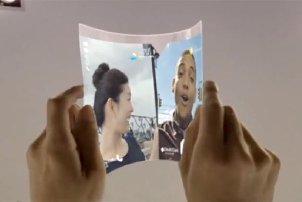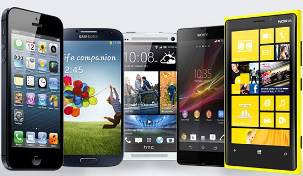At the Apple Worldwide Developers Conference (WWDC) 2010 – held in San Francisco’s Moscone Center on June 7, 2010 – then-chairman and CEO of Apple Steve Jobs unveiled the fourth-generation iPhone. Officially named the iPhone 4, the 3G smartphone went on sale seventeen days later.
Like previous entries of the iPhone brand, the iPhone 4 sports incremental improvements over the past three production cycles. The fourth-generation iPhone was the first of the brand to have Apple’s Retina Display, characterized by pixel density. The resolution is 960-by-640 pixels, double that of previous iterations. The iPhone 4 also got a VGA front-facing camera for video calling and a 5-megapixel rear-facing camera with 720p video recording capacity.
Other enhancements included 512 MB of RAM (instead of 128 MB or 256 MB) and Bluetooth 4.0 wireless connectivity, which replaced Bluetooth 2.1 + EDR. When the iPhone 4S debuted on October 14, 2011, Apple had upgraded the rear-facing camera to an 8-megapixel device with 1080p video recording capacity. Also, Apple replaced the Apple A4 system-on-a-chip with the dual-core A5 processor, added a natural language voice control system named Siri, and debuted the iOS 5, which introduced iCloud, iMessage, and Twitter integration.
Pre-order Problems
Soon after Apple made the iPhone 4 available for pre-order on June 15, 2010, the online Apple Stores in the United States and the United Kingdom crashed due to the spike in traffic. Physical stores also experienced problems with completing pre-order transactions due to the web traffic surge. Almost immediately AT&T and Softbank stopped advance sales of the phone in the United States and Japan, respectively, since demand was likely to exceed supply.
Initial Sales
Apple received 600,000 iPhone 4 pre-orders in the first 24 hours of availability. At that time, this was the largest number of pre-orders in a day that the company had received for any of its products. Within the first three days of availability, Apple had sold 1.7 million iPhone 4s, which was another record.
Later Sales
Sales of the iPhone 4 were further bolstered by the arrival of the 4S variant. Although it is considered the fifth generation of the iPhone because of its internal improvements, there are virtually no external differences between the iPhone 4 and iPhone 4S. Thus the 4S is sometimes referred to as a mid-generational revision of the original model. The 4S lived up to its slogan, “The most amazing iPhone yet,” pushing 4 million units within the first three days of its launch (October 14 to October 17, 2011). This more than doubled the feat of the iPhone 4 the year before.
By June 2013, almost two years later, sales of the iPhone 4 and 4S were still brisk. Apple Insider reported that the current iteration of the brand, the iPhone 5, accounted for 52 percent of Apple smartphone sales. Meanwhile, the iPhone 4 and iPhone 4S shared the remaining 48 percent: 18 percent for the former, 30 percent for the latter. Notably, the iPhone 5 sold 5 million units within its first three days of release. That’s 25 percent more than the 4s and more than 60 percent more than the iPhone 4.
The iPhone 4 sold very well, which is unsurprising for an iPhone. In fact, it set some records sales-wise. Even though its numbers were eventually eclipsed by later iterations, it is rightly considered a commercial success due to its enduring public appeal.


